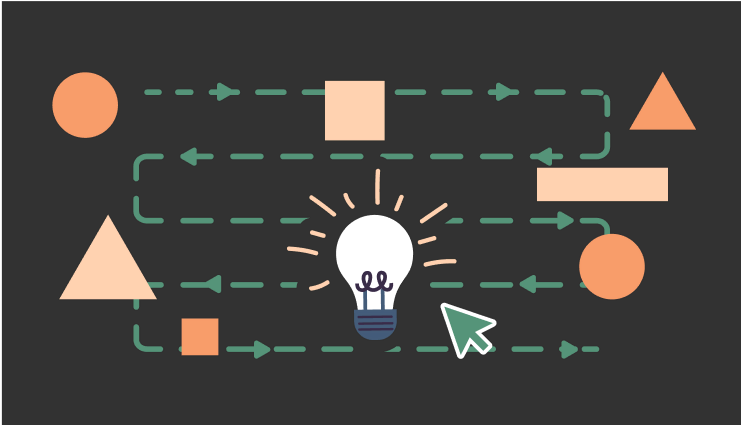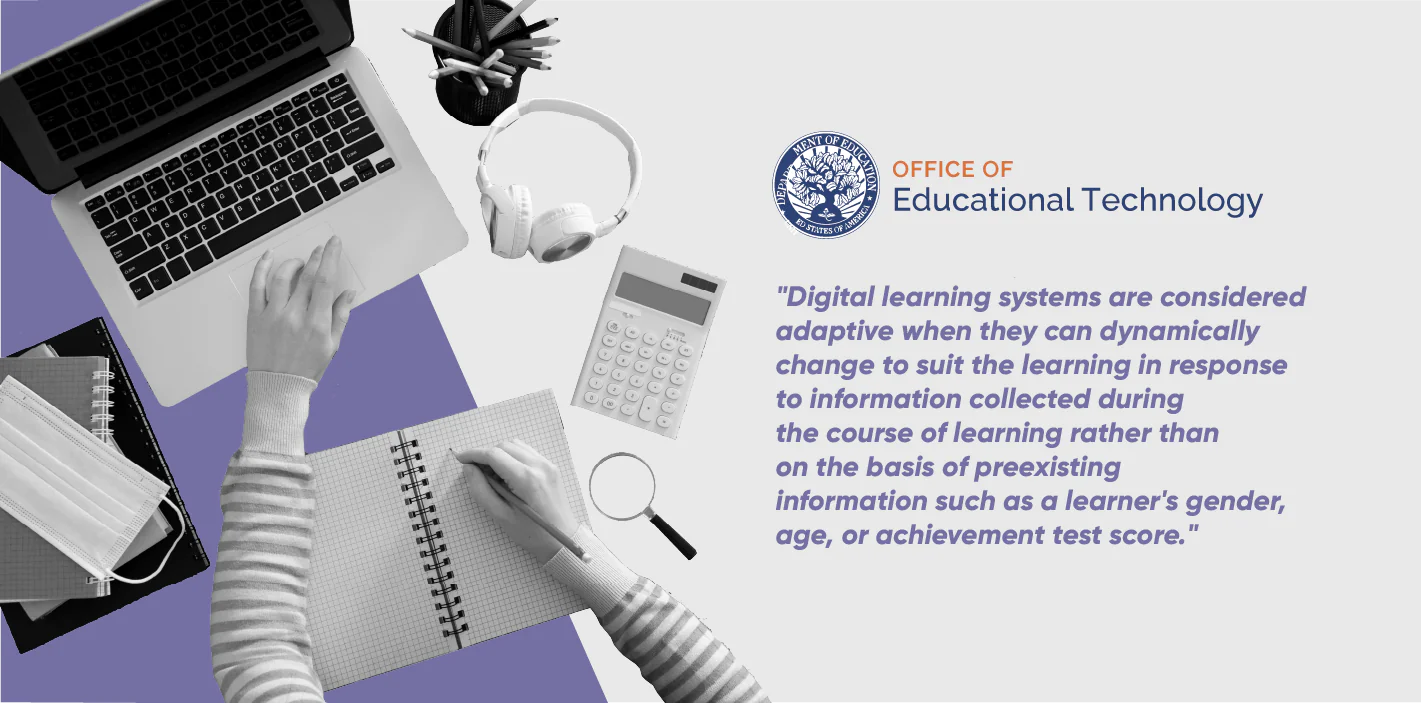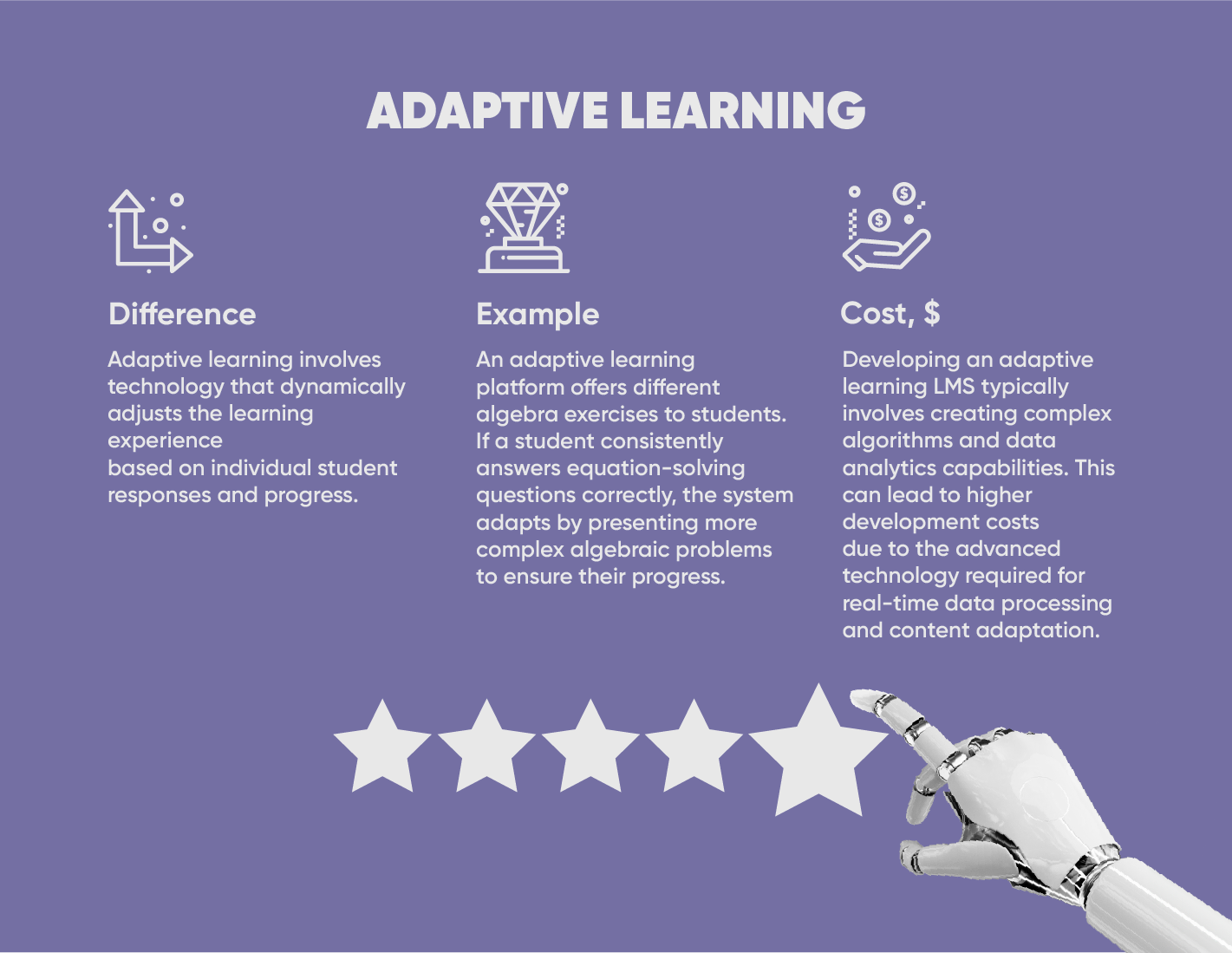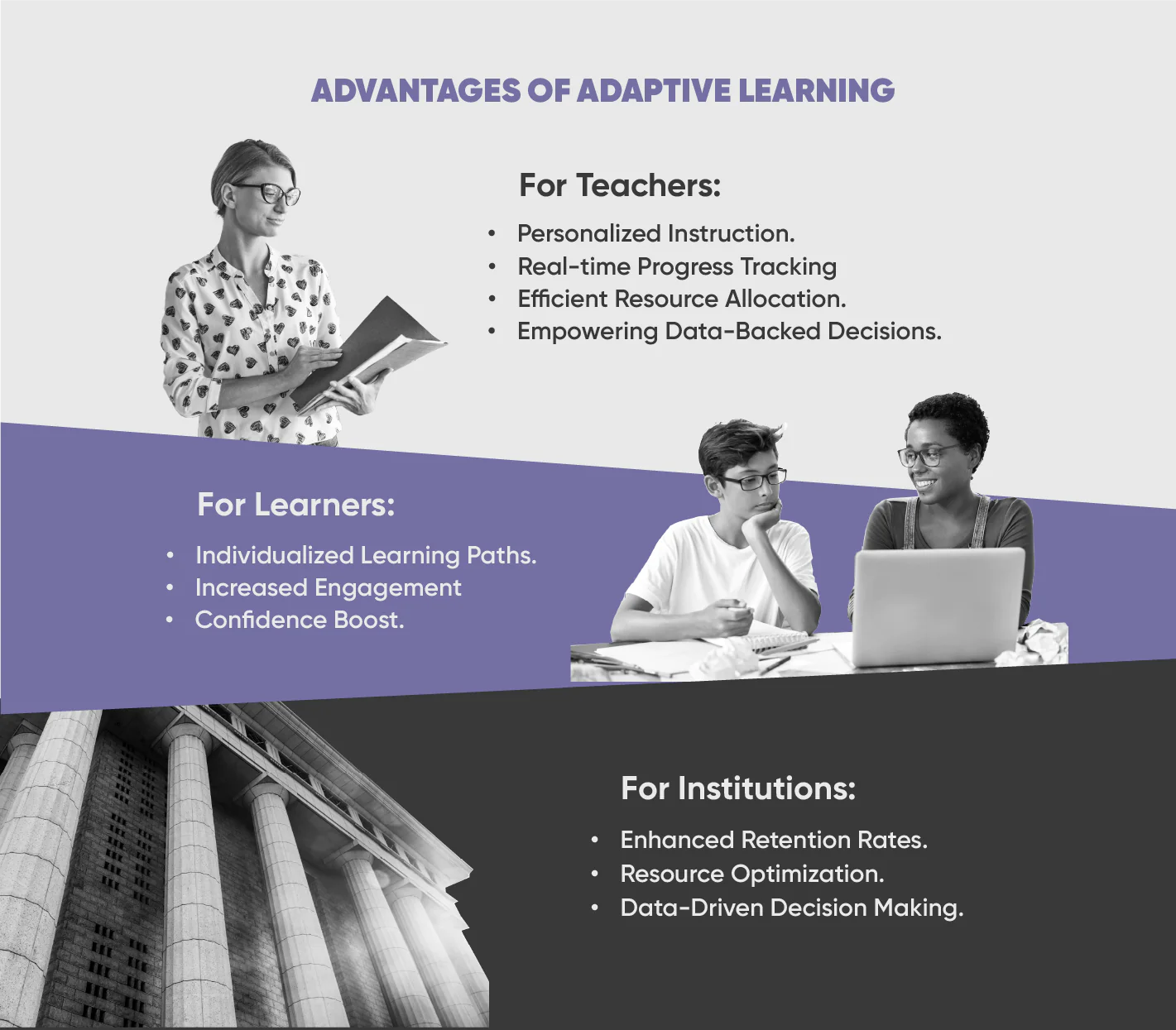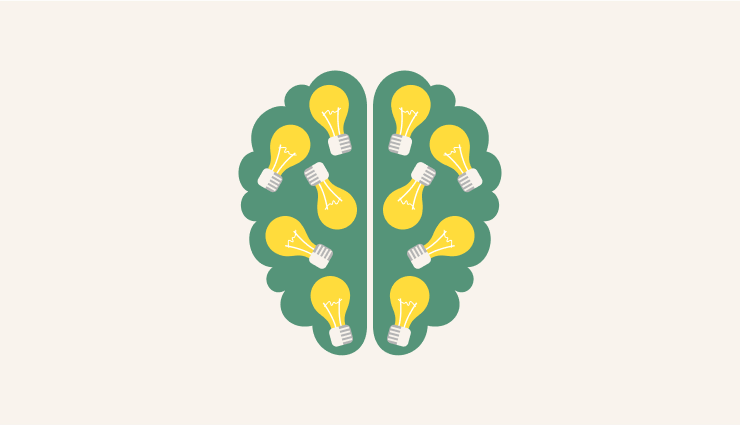A great example of how you can benefit from adaptive learning technology is the case of the University of California, Los Angeles.
The University implemented adaptive learning within a course. Just look at the positive changes that awaited the educational institution after this:
- Median exam scores experienced a substantial leap from 53% to the 72-80% range.
- The University reduced the average course attrition rate four-fold — from 43.8% to 13.4%.
- Female students reduced their attrition rate from 73.1% to 7.4%.
Were these improvements a coincidence or a pattern? Let’s investigate this together.
What is Adaptive Learning Technology?
Adaptive learning systems in education use a mix of data and technology to give each student a personalized learning and development experience. Moreover, the success of each student is tracked by the system separately.
What these systems are also capable of is instant adaptation to how students interact with the material. Depending on a student’s performance, the e-learning system adjusts.
It’s about meeting students where they are and guiding them from there. Understand the topic well? An adaptive learning system won’t slow you down with repeated lessons — it will offer more challenging material. On the other hand, if your progress slows, the system won’t rush you. Instead, it encourages you to grasp the current material or topic.
How Adaptive Learning Works
The adaptive learning approach is a helping hand that students can always count on. It works like a digital tutor. This tutor watches how you learn and changes the material to fit your needs.
Here’s how it happens:
- AI and Machine Learning: Help the system understand learning patterns. They analyze how students respond to tasks and quizzes and then predict what each learner needs next.
- Data Collection and Student Assessment: Every click, answer, and pause is analyzed.
- Real-Time Feedback and Adjustment: The system doesn’t wait for a teacher to step in. It gives hints, changes the difficulty, or recommends review material immediately.
Everyone learns differently, and adaptive tools are built to respect that — especially when we talk about adaptive learning in online education.
Benefits of Adaptive Learning for Teachers
Let’s look at some of the main adaptive learning technology examples that teachers can adopt.
| Feature | What It Does | Classroom Example |
| Personalized Instruction | Identifies each student’s strengths, weaknesses, and learning speed | A high school math teacher sees a student struggle with algebra but do well in geometry. The system suggests focused exercises. |
| Progress Tracking | Shows live student progress and performance | An elementary teacher sees a student falling behind in reading. The system recommends extra materials to support them. |
| Resource Allocation | Matches the right materials with the right students | A biology professor uses adaptive learning technology in the classroom to provide text, video, or simulations. |
| Data-Backed Decisions | Gives teachers data to guide instruction | A middle school teacher spots students struggling with fractions and plans a small group activity to help them. |
The Impact of Adaptive Learning
Adaptive learning for students goes beyond better test scores. For teachers, this is not just another way of teaching a subject.
Research shows students in adaptive courses complete lessons 25% faster and finish more courses — over 30% more, in some studies.
In a group workout, everyone does the same training. Some fall behind. Others get bored. But a personal trainer watches your form, tracks your progress, and adjusts the plan. That’s what adaptive learning does in education:
- Students feel less frustrated. Like a smart trainer, the system matches the pace to their current level.
- Teachers get better insights. Instead of sorting through data, they see who’s struggling right away and adjust support.
- Everyone improves. High performers get harder tasks. Struggling learners get help before falling behind.
- Motivation increases. No more repetition or confusion — just the right challenge at the right time.
So, just like a workout adapts to your body, adaptive learning adapts to your brain — keeping students engaged, on track, and improving every step of the way.
Adaptive Tools and Platforms
There’s no shortage of tools claiming to personalize learning, but not all of them offer true adaptability. Below is a comparison of popular adaptive learning platforms that stand out for their real-time adjustments, AI-driven insights, and ability to support diverse learning needs. These platforms are used across K-12, higher education, and corporate training.
| Platform | Main Features |
| Open edX LMS | Supports adaptive learning paths through conditional content, integrated assessments, and third-party plugins like adaptive modules, content management, wide network of providers |
| Knewton Alta | Real-time personalization, analytics dashboard, content aligned with learning goals |
| Smart Sparrow | Customizable pathways, interactive content, analytics for instructors |
| DreamBox Learning | Focused on math (K–8), adaptive content, and teacher insights |
| McGraw Hill ALEKS | AI-driven assessments, skill mastery tracking, personalized learning paths |
| Squirrel AI | AI-powered tutoring, real-time feedback, data-rich performance reports |
| Socratic by Google | AI-driven student help via Q&A, visual explanations, and subject-specific resources |
Conclusion
So, the first conclusion we should draw is that instead of a system where students must adjust to a rigid structure, we now have one where the structure adjusts to the student.
In this case, we don’t have to wait for the teacher to notice that some are lagging behind or others are ahead. The system will do this before the hidden trend becomes obvious.
For institutions and companies, this means better outcomes with the same or fewer resources. It means clearer priorities and more time to teach for teachers. For students, it’s a more fair, flexible, and motivating environment. It sounds like a win-win strategy, doesn’t it?
